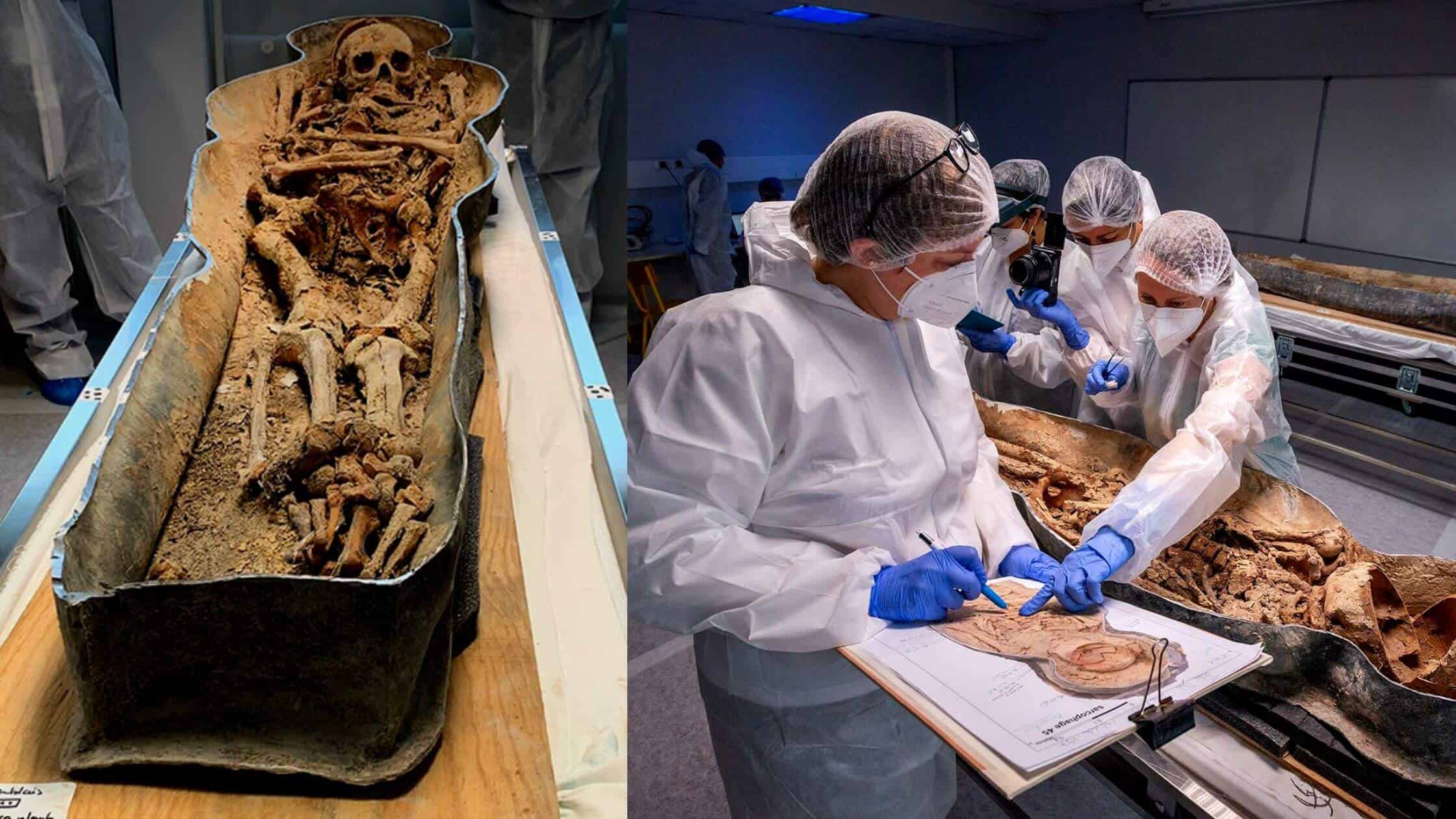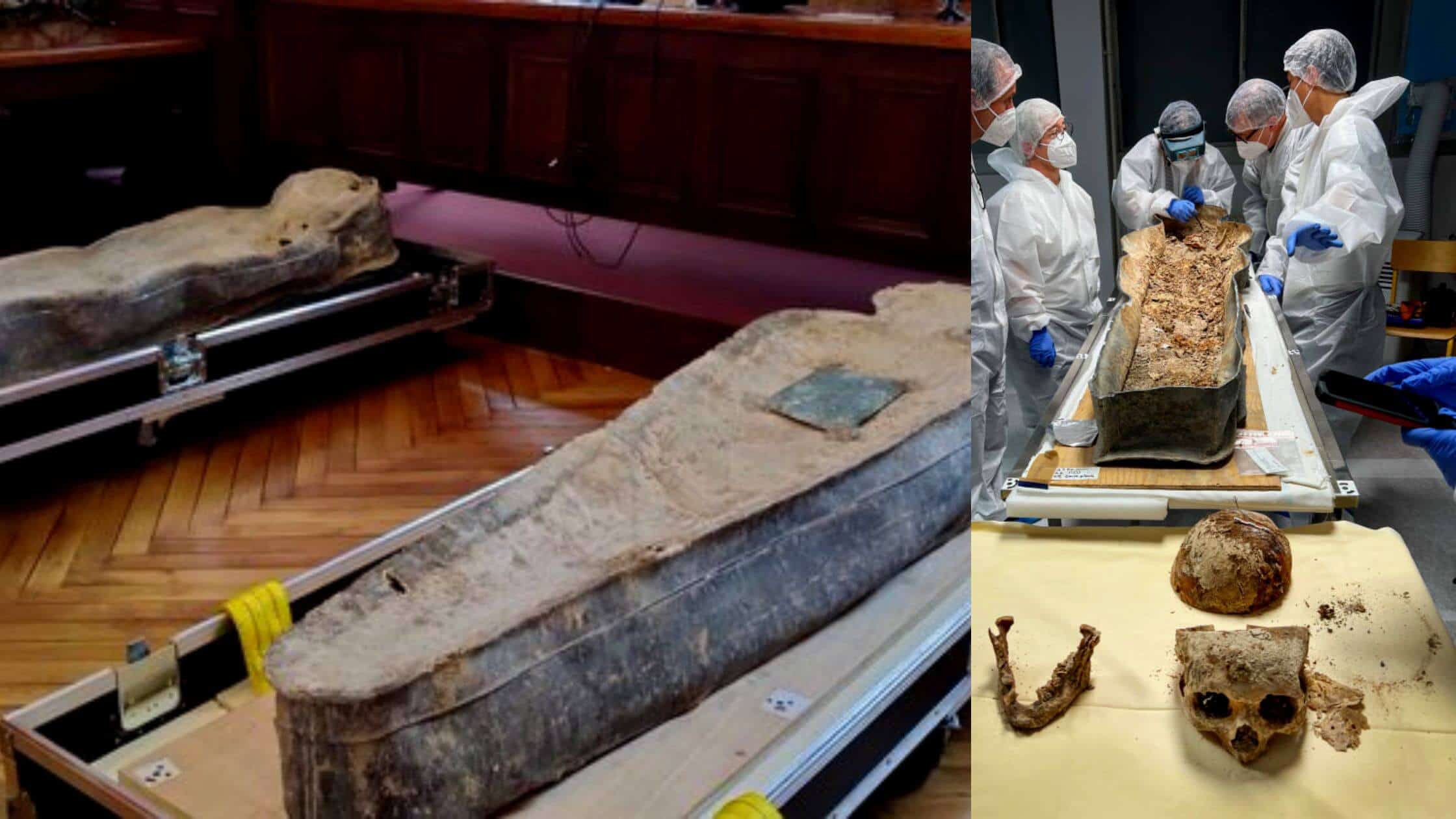Social
Two Lead Coffins Discovered At Notre Dame Are Opened By Scientists

Historically, most of Notre Dame was destroyed in a fire mishap. Additionally, the artisans discovered two unusual sarcophagi when the restoration work got underway. A “lead coffin” was used to enclose the body during burial, as opposed to the more common practice of burying bodies in wooden boxes.
Academics from various fields became interested in this right away. Everyone, from historians to archaeologists to material scientists, wanted to conduct their research to piece together the history of the two mummies that were preserved in the lead coffins.
According to presumptions, the aristocracy only buries in lead coffins, which is why there is a great need to inspect the mummies within.
The lids of two lead coffins have been uncovered, according to the latest comments by French scientists. At Notre Dame Cathedral, these were discovered buried beneath the nave. The researchers learned more about the people hidden inside thanks to the opened lids, which was informative.
INRAP, one of the nation’s most competent archaeological agencies, is responsible for the investigations. However, it is working with the University of Toulouse to complete the project. Their combined efforts will help to reconstruct the past of the infamous Notre Dame and better comprehend it.
Sources claim that they have discovered one body inside one of the coffins, and it just so happens to be a high priest. The other is a wealthy young man, according to the identification. This one has the moniker “illustrious stranger,” according to the archaeologists. They claim he was interred with a floral wreath and earned the nickname “illustrious stranger” because of it.
Examining The Coffin Of The High Priest
Fortunately, the high priest has identified thanks to a permanently attached plaque to the top of his casket. The plaque displayed his name as Antoine de la Porte because it was sufficiently undamaged. Our first topic has been given the moniker “Jubilee Canon” by scientists and archaeologists. He passed away around 1710, according to the memorial.

They discovered after an additional investigation that the timeline of their graves did not line up. The aristocratic guy was several meters deep, while the high priest was buried at about 20 centimeters. The two coffins were buried at different times, which is what it leads us to believe.
Porte’s remains were in extraordinary shape, according to the sources who questioned the INRAP about them. His bones appear to be preserved in their entirety. Additionally, it was discovered that the texture of the hair and beard hair was in excellent shape. The collection of textile remnants by archaeologists is more uncommon.
This unique identification has significant significance for anthropologists and archaeologists. You may wonder why. That is because it will enable the correlation of the information. The archaeologists will be able to connect his time on earth to natural phenomena by comparing his biography to the findings of his bones.
>Also Read: A Vast Tunnel Has Been Discovered Beneath An Egyptian Temple By Archaeologists!
The Other Unknown Sarcophagus Person
The organization has not yet been able to identify the other person. The organization alleges that the stranger, who is still going unnamed, is being sought after by INRAP. There are specific hints that point to possible identities for him.
His skeleton established that he was between 25 and 40. Given the unusual burial design and treatment, archaeologists believe he was a knight. His abdomen symptoms served as additional evidence for this. He was described as a rider with significant upper-limb physical activity.
To examine the coffin’s interior, INRAP officials employed an endoscopic camera. They observed that there were shroud remnants within the casket. Countless fragments of foliage and flowers were also present at the level of the skull. This indicates that the individual was most likely buried with a floral wreath.
